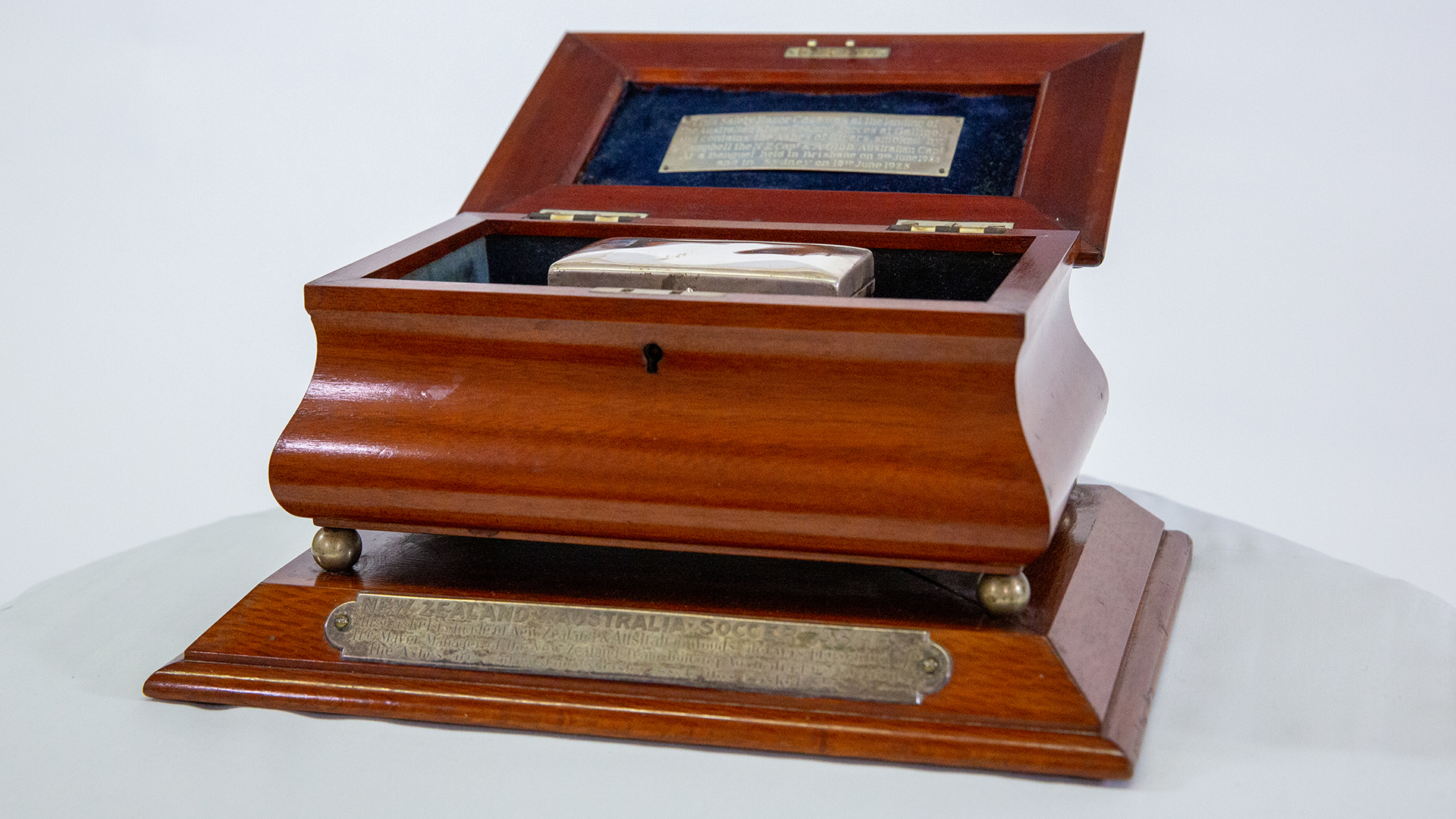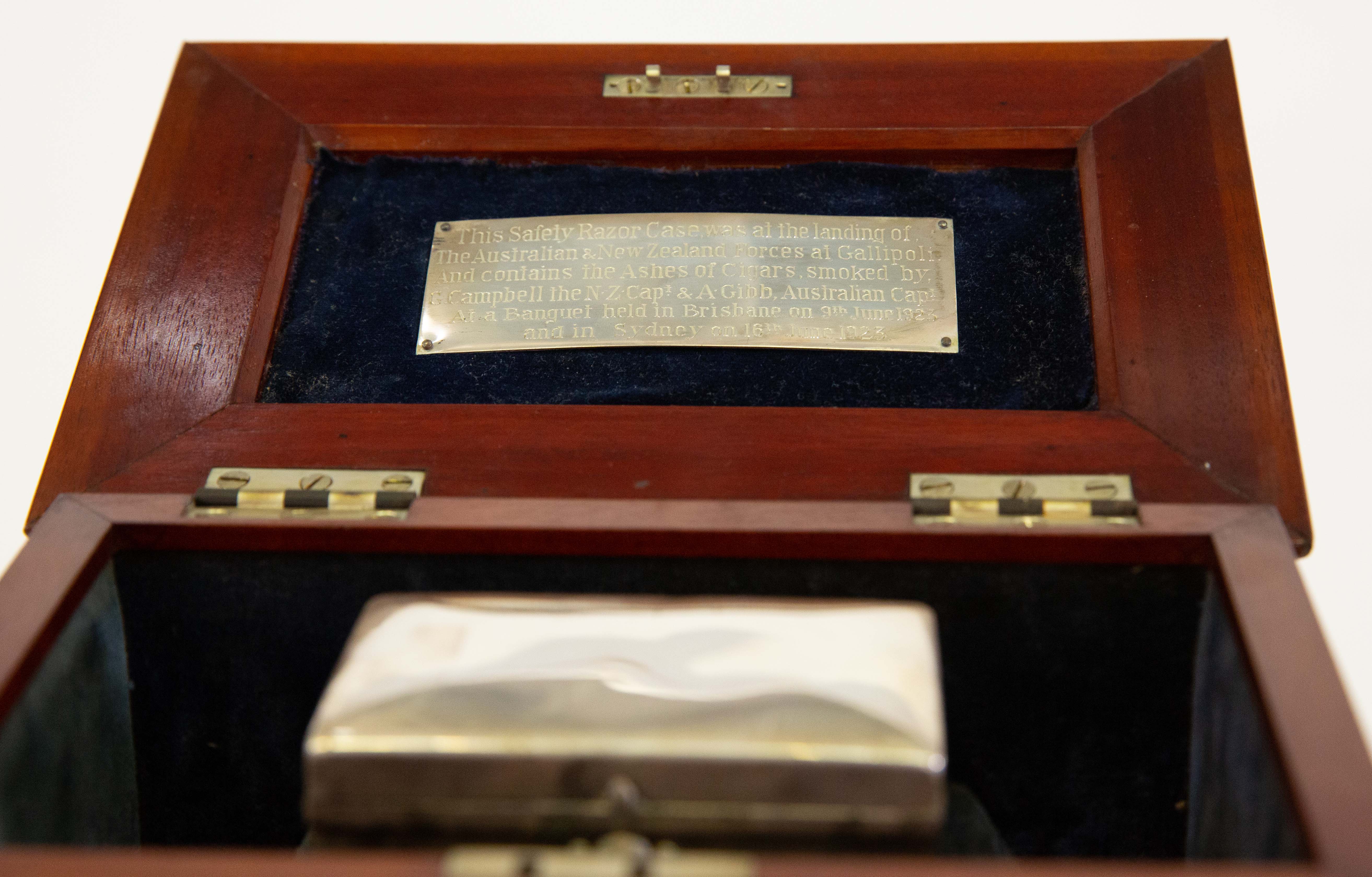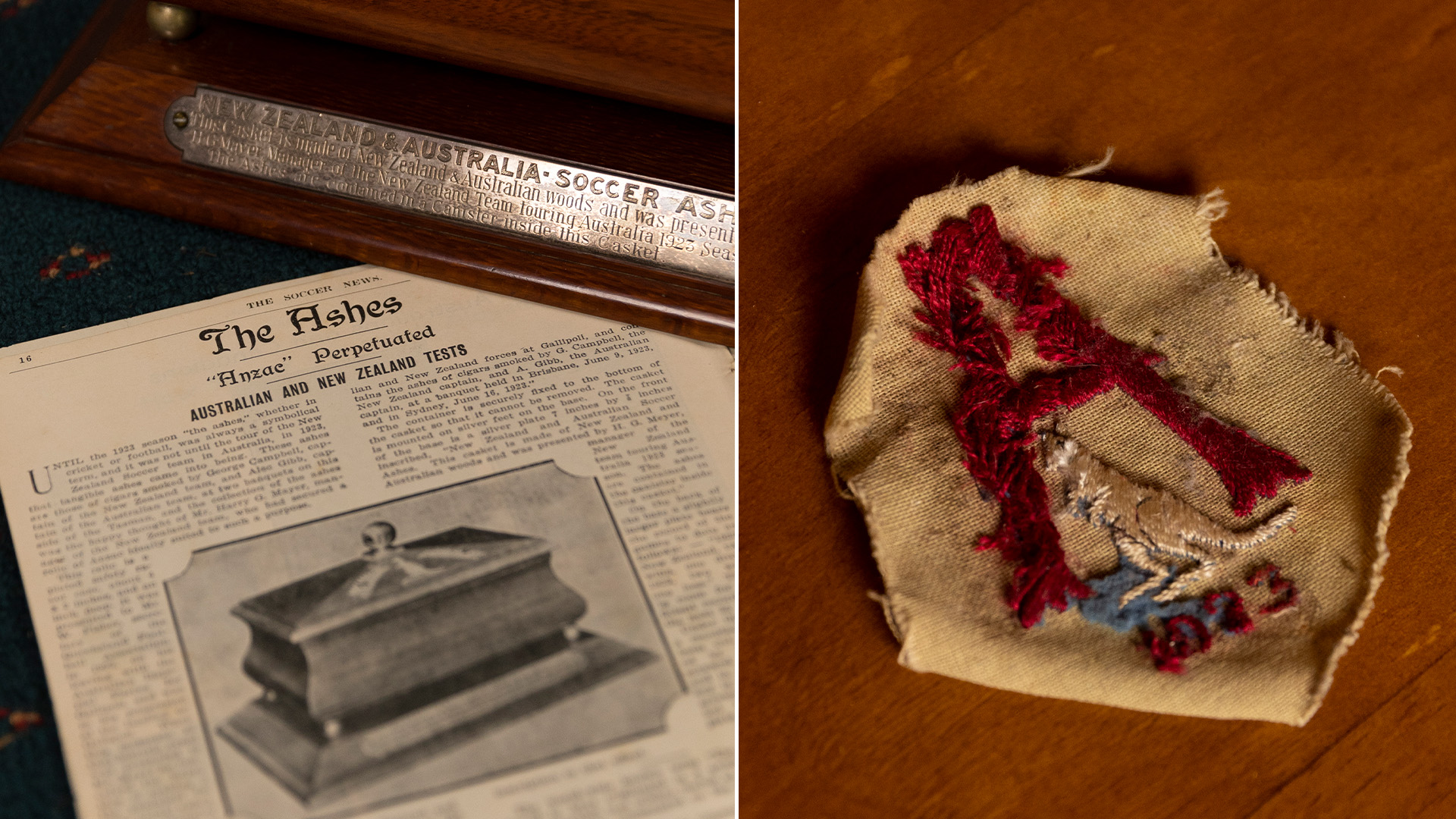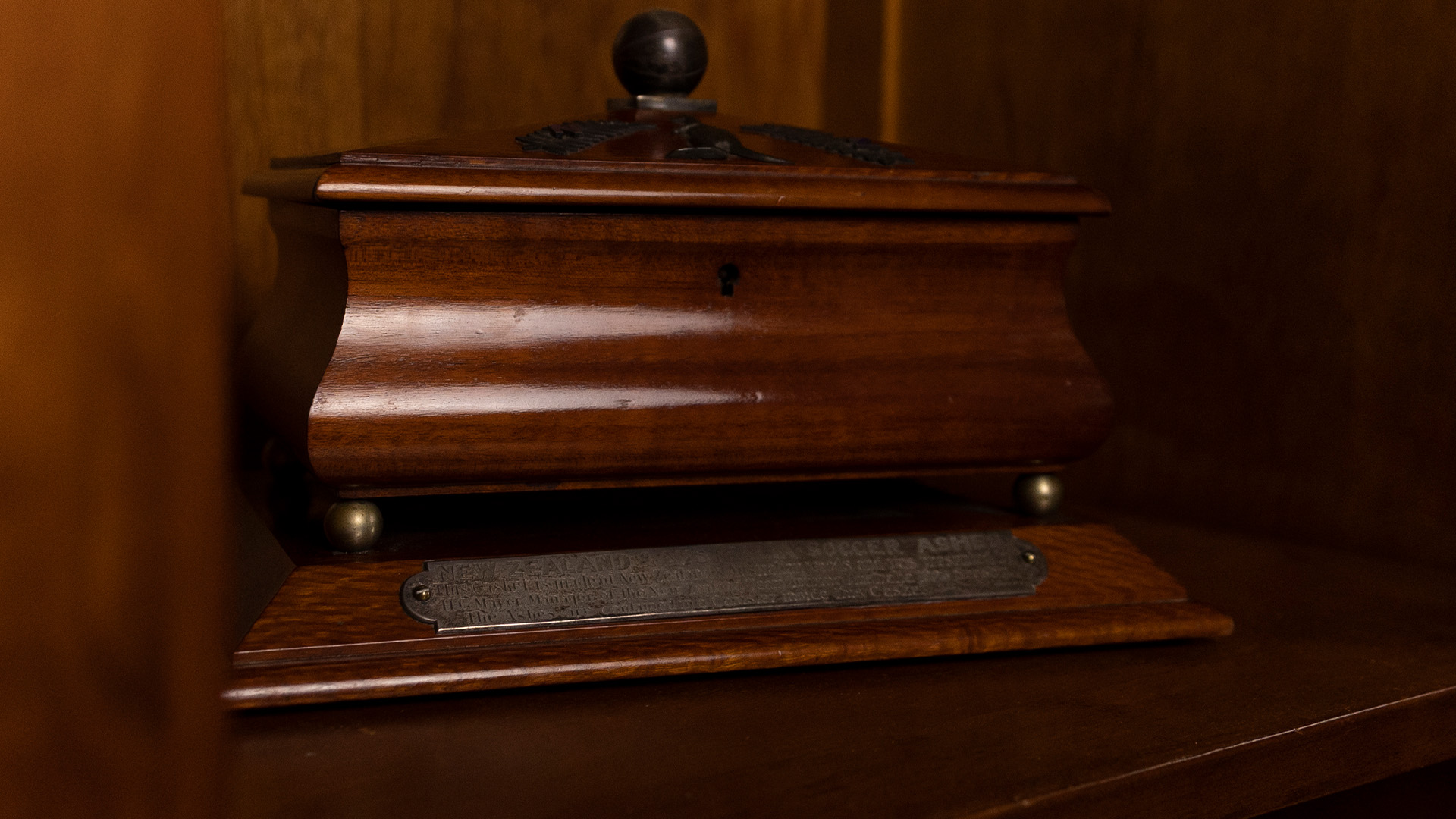June 9, 2023 marked the 100 year anniversary since Australia's first match on home soil against New Zealand.
Read on to learn more about how the Soccer Ashes came about following that fateful encounter in Brisbane a century ago.
With a world-famous history originating in 1882, you would struggle to find an Australian sporting fan unfamiliar with The Ashes urn, a prize still played for today between Australia and England’s cricket teams.
However just a few decades later, football’s answer to The Ashes came in the form of a fierce trans-Tasman rivalry - that has long since been forgotten.
Created in 1923, the ANZAC Soccer Ashes trophy was a powerful symbol of the Australian men’s national team’s early years, containing the ashes of cigars, housed in a safety razor case that was carried at Gallipoli.
While for 30 years it served as the prize for international ‘tests’ between Australia and New Zealand, it slipped out of the conversation in 1954.
The trophy’s whereabouts, and reasons for disappearing, have remained a mystery since.
But now, almost exactly 100 years since it was created, it has re-emerged – bringing with it a remarkable artefact of Australia’s sporting and military history, and maybe just answering a few of the questions around why it was allowed to slip away.
Read on to find out more about the origins of the Ashes, how they connect to the early history of the Socceroos (although that nickname would not be coined until half a century later), and why such a powerful sporting prize could have been so quickly forgotten.

While the Soccer Ashes trophy was not masterminded and built until 1923, it was actually played for a year earlier.
Australia and New Zealand took to the pitch for their first ‘A’ Internationals in June 1922 in Dunedin, Wellington and Auckland, before a return tour in Australia in 1923.
With a well-organised set-up, boosted by the heroics of their captain George Campbell, New Zealand had the edge throughout these fixtures, winning two and drawing one of the first series.
“Over the over the six matches, it's clear that New Zealand were the superior team,” explains historian Trevor Thompson, who co-authored Burning Ambition: The Centenary of Australia-New Zealand Football Ashes with Nick Guoth.
“They won the very first match between the two countries in Dunedin 3-1 in front of a good crowd. It was a great match by all accounts and everybody thought this couldn't have started better.
“The second match, a 1-1 draw was very badly reviewed as being boring and a stalemate, but it was also a bit physical, with lots of injuries - the time players spent getting medical attention was pretty high.
“This was criticised a lot so the referee for the third and final match of that New Zealand leg of the tour made it clear to both teams that he wouldn't be standing for rough play, and it was again a better match, which New Zealand won 3-1 as well.”
Despite tasting defeat first-up, upon crossing the Tasman a year later, Australian hopes were higher.
“When we get to Australia, the presumption by the Australians is ‘well we're playing at home now.’,” Thompson retells.
“We're not playing on those soft, wet pitches that we had to play on in New Zealand, there are harder grounds (in Australia) and this is going to favour us and we’ll prove our superiority: it didn't quite work out that way.
“Australia won the first match with a last-minute winner from Bill Maunder, the big hero from the Hunter Valley.
READ MORE: The remarkable ‘Storey’ behind how the Soccer Ashes mystery was solved
“So everybody thought this was getting back on track, but then there were two really dramatic matches to follow.
“At the Sydney Cricket Ground, captain George Campbell scored a hat-trick to take the prize for New Zealand.
“And then the final match against the Kiwis, in Newcastle, much-changed teams took the field and Australia got hammered 4-1, with Campbell scoring all four goals.”
While it almost all played out in New Zealand’s favour on the pitch, off the pitch, the two nations came together with dreams of establishing a tradition.
“There wasn't a trophy to play for and nobody really thought about inaugurating a trophy until the Australian leg of those tours, when it was suggested that a proper ashes trophy should be there.” Thompson says.
“The plan was to commemorate this momentous event of both countries, having their first ever full A international matches is an achievement in itself, especially in Australia's case where we had been lobbying the Football Association in London for almost 40 years to try to get some international contact.”
The ANZAC Ashes trophy was the brainchild of New Zealand team manager and renowned trophy-maker Harry Mayer.
It was decided that the elaborate wooden casket would be constructed from a combination of New Zealand honeysuckle and Australian maple, contains ashes of cigars smoked by Australian captain Alex Gibb and New Zealand captain Campbell at a ‘cigar night’ following the nation’s meeting in Brisbane on June 9, 1923.
Powerfully, the ashes were housed and sealed in a silver-plated razor case that was carried by Queensland Football Association Secretary, Private William Fisher at the landing of Gallipoli in 1915.
“They came up with this plan of this razor case, which had been to Gallipoli during the First World War, only a few years earlier - the most powerful cultural event that united Australia and New Zealand,” Thompson explains.

“So that was it, it had a plate, which was meant to commemorate the winners have the trophy from now until the end of time, until we fill up the plate.
“Because this was going to be the trophy, which would unite the two countries forever, the record of our historical contests, which surely would continue indefinitely.”
At least that was the plan.
Interestingly, the plate included to commemorate the winning nations of the series was not engraved at any stage after 1923.
Despite this, historical records indicate the trophy was mentioned in the context of these matches as Australia and New Zealand developed a strong rivalry for the first 30 years of their time playing international football.
NEWS STORY: ANZAC Soccer Ashes Trophy recovered
That was until 1954, when the trophy was last seen.
“The Ashes were well referred to the early days but then as time went by, they fell out of prominence.
“It was mentioned in the early 50s contests between the two countries, but in the 1958, there was meant to be a series, but the trophy doesn't get a mention in the press of the day.
“Nobody remarks on the fact that the trophy is not there. It’s just gone. Nobody knows, and the mystery begins.”

That mystery would last nearly 70 years before the grandchildren of former Australian Soccer Football Association (ASFA) Chairman Sydney Storey, who passed away in 1966, discovered the prized possession in pristine condition, where it had been diligently stored alongside a collection of century-old footballing artefacts in the garage of their family home.
“This is quite possibly the greatest domestic treasure there is in the game. It is a fabulous thing to have in such good condition,” Thompson emphasised upon being surprised by the Ashes trophy.
“It's packed with so much imagery about the unity of the two countries, and the razor case that had been to Gallipoli referenced the recent experience of fighting shoulder to shoulder during the First World War.
“This assumed a legendary status and between both countries, built on the sacrifices that had been made by the men fighting in the armed forces from both countries against a common enemy.
“It’s an emblem more of unity than it is of opposition, which is intriguing for a trophy commemorating a sporting contest.”
Since it first sparked his interest in 2009, football historian and academic Ian Syson has committed a significant amount of time towards studying the connection between the sport and military – while at times leading the calls for the recovery of the Ashes trophy.
He explains why the trophy may have slowly slipped out of the two nations’ sporting consciousness throughout the 1950s.
“It’s an interesting phase in Australian soccer history, where 1954 is very much the beginning of the end,” Syson explains.
“Concern about representative football begins to decline as club football becomes much more important.
“The continental Europeans come into Australia and they're they bring professionalism, they bring quality, they bring in close grounds, but they also bring club focus, to the detriment of other considerations such as international football.
“I think at this point, the idea of Australia and New Zealand as being an important contest starts to decline. I think we lose track of the Soccer Ashes because we lose our game’s focus on that international contest.”

But as Syson enforced after being shocked by the re-appearance of the trophy, finding it has the potential to change that.
“That's what makes it emotional,” he reflected. “It's not about me, obviously I'm pleased that I'm here and I've seen it, but it just means so much for the game.
“This is such an important symbol, and these documents are such important records of something so important that we should protect, show off and curate.
“They remind us how strong this game was, culturally. They remind us of how important it was.
“It's also particularly poignant because they symbolise the game's participation in World War I. There's approximately 4000 soccer players that go to World War I, and something like 500 of them get killed.
“All of this stuff symbolises and records a time where the game was really strong, maybe not the strongest game in Australia, but really strong and packed with tradition of its own accord.”
